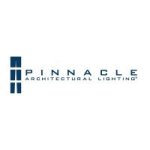
Antimicrobial LED lighting represents a promising technology for combating COVID-19 and enhancing hygiene and safety measures in various environments. The COVID-19 pandemic has raised awareness of the importance of effective disinfection measures to reduce the transmission of the virus. As a result, there has been a greater emphasis on exploring and implementing innovative technologies, such as antimicrobial LED lights, to enhance disinfection practices in various settings. Traditional disinfection methods, such as chemical disinfectants and UV-C lamps, have limitations in terms of safety, efficacy, and environmental impact. Antimicrobial LED lights offer a safer and more energy-efficient alternative for continuous disinfection without the use of harmful chemicals or mercury. The demand for such solutions has increased significantly during the pandemic, driving research and development efforts in this area. Antimicrobial LED lights, with their long lifespan, low maintenance requirements, and compatibility with existing lighting infrastructure, offer a practical and sustainable solution for continuous disinfection in various indoor environments.
Antimicrobial LED lights operate in either the UV-C band or the visible band of the electromagnetic spectrum. UV-C antimicrobial LED lights emit light within the ultraviolet spectrum, specifically in the UV-C band, with wavelengths typically ranging from around 200 to 280 nanometers (nm). This range of wavelengths is crucial because UV-C radiation at these wavelengths is highly effective at killing or inactivating bacteria, viruses, and other pathogens by damaging their genetic material, specifically the DNA and RNA. When UV-C radiation is emitted from the LED, it penetrates the outer cell wall of microorganisms and enters their DNA or RNA. The UV-C radiation disrupts the genetic material of the microorganisms, causing damage to their DNA or RNA structure. The damage to the DNA or RNA of microorganisms prevents them from replicating or performing vital cellular functions. As a result, the microorganisms are rendered unable to reproduce or cause infections. This process efficiently disinfects surfaces, reducing the risk of contamination and transmission of pathogens. UV-C antimicrobial LED lights can also be used to disinfect air in indoor environments. When integrated into air purification systems or standalone air purifiers, UV-C LED lights emit UV-C radiation into the air passing through the system. UV-C antimicrobial LED lights are effective at disinfecting water by inactivating harmful microorganisms present in drinking water, wastewater, and process water. When UV-C radiation is directed into water, it penetrates the cell walls of microorganisms and damages their DNA or RNA, preventing them from reproducing. This process ensures that the water is safe for consumption or discharge, protecting against waterborne diseases and contamination.
Visible antimicrobial LED lights emit light in the visible spectrum, typically targeting specific wavelengths, such as violet-blue light (around 405 to 470 nm), which have demonstrated antimicrobial properties. These LED lights stimulate the production of reactive oxygen species (ROS) within microbial cells when absorbed, leading to oxidative damage and ultimately causing cell death. Visible antimicrobial LED lights offer a non-chemical approach to disinfection, relying on the antimicrobial properties of specific wavelengths of visible light to inactivate microorganisms. This eliminates the need for chemical disinfectants, which may have environmental or health concerns associated with their use. Additionally, non-chemical disinfection methods can help mitigate the development of microbial resistance over time. Visible antimicrobial LED lights operate in the visible spectrum and do not emit harmful UV radiation, making them safer for human exposure. In contrast, UV-C LED lights emit ultraviolet radiation, which can be harmful to the skin and eyes if not properly shielded or controlled. This makes visible antimicrobial LED lights suitable for use in occupied spaces without posing risks to occupants. Visible antimicrobial LED lights can operate continuously as part of lighting fixtures in indoor environments, providing ongoing disinfection without the need for separate disinfection cycles. In comparison, UV-C LED lights typically require specific disinfection cycles and may need to be operated when spaces are unoccupied due to safety concerns. This continuous operation enhances overall cleanliness and reduces the risk of microbial contamination in various settings. Visible antimicrobial LED lights can be integrated into various lighting fixtures commonly found in indoor environments, including overhead lighting, wall-mounted fixtures, and portable devices.
Antimicrobial LED lights have various applications across different industries and settings where disinfection and sanitation are critical. Antimicrobial LED lights are extensively used in hospitals, clinics, and medical offices to disinfect patient rooms, operating theaters, waiting areas, and high-touch surfaces. They help reduce the risk of healthcare-associated infections (HAIs) by killing or inactivating bacteria, viruses, and other pathogens on surfaces and in the air. In food processing facilities and commercial kitchens, antimicrobial LED lights are used to disinfect food contact surfaces, processing equipment, and packaging materials. They help prevent contamination and ensure food safety by eliminating harmful microorganisms, thereby extending the shelf life of perishable products. Antimicrobial LED lights are employed in municipal water treatment plants, wastewater treatment facilities, and industrial water purification processes to disinfect drinking water, wastewater, and process water. They help inactivate bacteria, viruses, and protozoa, ensuring the safety of the water supply. In research laboratories and cleanrooms, antimicrobial LED lights are used to maintain sterile conditions and prevent cross-contamination. They help sterilize work surfaces, equipment, and biological safety cabinets to ensure the integrity of experiments and research. Antimicrobial LED lights are incorporated into consumer products such as UV-C disinfection wands, portable sterilizers, and UV water bottles. These products provide individuals with convenient solutions for disinfecting personal items, electronic devices, and drinking water while on the go. Antimicrobial LED lights are increasingly being deployed in public spaces, transportation vehicles, and high-traffic areas such as airports, train stations, buses, and subway systems to disinfect surfaces and minimize the spread of infectious diseases among passengers and commuters.
Antimicrobial LED lights come in various forms to suit different applications and environments. Fixed LED light fixtures that are permanently installed in a specific location, such as ceilings, walls, or countertops. Fixed fixtures can be integrated into existing lighting systems or installed as standalone units. Portable antimicrobial LED lights are compact and lightweight, allowing for easy transport and flexibility in disinfection applications. These units typically feature a handle or mounting mechanism for convenient placement on surfaces or attachment to equipment. Handheld antimicrobial LED devices are designed for on-the-go disinfection of surfaces and objects. They are compact, lightweight, and battery-powered, allowing for quick and efficient disinfection without the need for electrical outlets or cables. Some antimicrobial LED lights are integrated into specialized equipment or devices for specific applications. For example, UV-C LED arrays may be incorporated into ventilation systems, water treatment systems, or medical devices to provide continuous disinfection and prevent the growth of harmful microorganisms. The choice of form for antimicrobial LED lights depends on factors such as the application requirements, space constraints, mobility needs, and aesthetic preferences.







